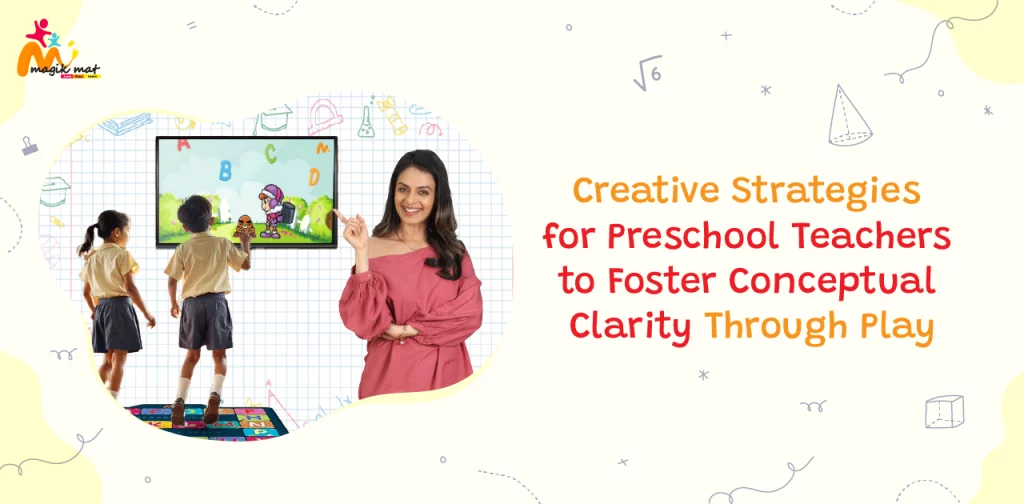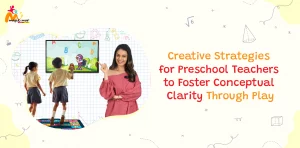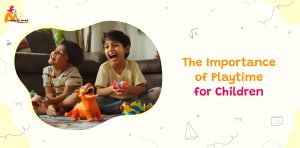Introduction
Conceptual clarity in early childhood lays the foundation for all future academic learning. In preschool settings, fostering conceptual understanding doesn’t always require textbooks or worksheets. Instead, play-based learning has emerged as one of the most effective strategies for engaging young minds while instilling core educational concepts. When thoughtfully planned, play becomes a powerful pedagogical approach that supports cognitive development, enhances language skills, and promotes emotional well-being. This blog explores practical, implementation-ready tips that preschool educators can use to build strong conceptual foundations through purposeful play.
Moreover, with the evolving demands of early education, schools are increasingly looking for methods that blend curriculum goals with engagement. Purposeful play offers this balance, delivering both structure and spontaneity in learning. By embedding educational intent into everyday activities, teachers can lay the groundwork for long-term academic success.
Why Play Matters in Conceptual Learning
Play is not just an activity—it’s the language of early learners. During play, children explore, experiment, and discover how things work. This active engagement helps them absorb abstract concepts in a tangible and memorable way. When educators design activities that merge play with intentional learning goals, children retain information more effectively.
Additionally, it fosters intrinsic motivation and curiosity—qualities essential for lifelong learning. As children play, they develop ownership over their learning journey, which naturally leads to stronger conceptual understanding.
Play also allows educators to introduce abstract concepts in familiar, relatable contexts, making learning feel natural and enjoyable. When children associate learning with fun, they are more likely to retain information and build positive attitudes toward education.
Key Benefits of Play-Based Conceptual Learning:
- Reinforces real-world understanding.
- Enhances memory through hands-on experience.
- Encourages critical thinking and problem-solving.
- Builds social and communication skills.
- Design Play Zones Based on Learning Domains
Organize the learning environment into specific zones aligned with areas such as mathematics, language, science, and motor skills. For example:
- Math Corner: Counting blocks, number mats, shape sorters.
- Language Area: Alphabet puzzles, storytelling props, phonics games.
- Science Zone: Nature tables, water and sand play, magnetic toys.
These zones give children the freedom to choose activities while enabling educators to monitor and scaffold learning.
- Integrate Concept-Oriented Play Materials
Choose materials that directly link to foundational concepts. Use:
- Numbered hopscotch mats to teach counting, sequencing, and addition.
- Color-coded building blocks for colour recognition and patterns.
- Story dice or puppets to enhance vocabulary and narrative skills.
- Balance beams or obstacle courses for spatial awareness and coordination.
Magik Mat, for instance, offers interactive learning through jumping-based games. Such innovative products are ideal for combining physical movement with academic instruction, especially in teaching Math and English concepts.
- Facilitate Guided Play Sessions
While free play encourages creativity, guided play allows educators to direct focus toward learning outcomes. During guided play:
- Set a clear learning objective.
- Use prompts and questions to nudge thinking. (e.g., “What happens if you add one more block?”)
- Offer gentle feedback and celebrate correct application of concepts.
This structured yet playful approach ensures children stay engaged while progressing through the curriculum.
- Incorporate Movement-Based Learning
Kinesthetic learning is especially effective for preschoolers. Activities like:
- Jumping on mats for number recognition.
- Dancing to action rhymes for vocabulary building.
- Sorting objects during relay games for categorization practice.
Movement not only boosts energy but also reinforces neural connections linked to conceptual learning. Magik Mat supports kinesthetic learners by turning traditional lessons into physically interactive games that increase retention and engagement.
- Rotate Activities to Reinforce and Expand Concepts
Repeating the same activity in different formats strengthens understanding. For example:
- Use puzzles one-week, matching cards the next, and digital games later to teach the same alphabet concept.
- Introduce math through board games, floor mats, and storytelling with number characters.
- Varied repetition keeps engagement high and helps abstract ideas settle in.
- Foster Collaborative Play to Encourage Communication and Reasoning
Group play encourages children to discuss, negotiate, and problem-solve together. Activities such as:
- Building towers in pairs.
- Creating group stories.
- Participating in pretend markets.
Such tasks promote the articulation of thoughts and foster conceptual clarity through dialogue and demonstration.
- Use Thematic Play Units to Build Conceptual Connections
Thematic units tie multiple subjects into a cohesive learning experience. For example:
- Theme: Seasons
- Science: Sorting clothes by weather
- Math: Counting leaves or flowers
- Language: Vocabulary like hot, cold, rainy
- Art: Making paper suns or snowflakes
This holistic integration helps children see patterns and relationships across subjects.
- Observe and Document Learning Through Play
Assessment in a play-based environment doesn’t mean tests. Instead, observe:
- How children approach tasks.
- The vocabulary they use.
- How accurately they apply concepts.
Keep anecdotal notes or short videos to track progress. These insights help tailor future play plans to individual needs.
- Scaffold Learning With Intentional Interventions
When children struggle with a concept, intervene subtly:
- Ask guiding questions.
- Introduce visual aids.
- Modify materials to simplify the task.
Gradual scaffolding helps children bridge the gap between what they know and what they are learning.
- Celebrate Small Wins to Build Conceptual Confidence
Positive reinforcement builds confidence. Acknowledge every step of progress:
- A child identifying a new shape
- Successfully using new vocabulary
- Applying counting in pretend shopping
Recognition encourages repeated application and deeper understanding.
Conclusion
Play isn’t a break from learning—it is learning, especially in preschool settings. When used intentionally, play becomes a robust medium to promote conceptual clarity across all domains of early education. Teachers who structure, guide, and scaffold play-based activities help children build strong cognitive foundations in joyful, memorable ways.
By integrating concept-focused play into daily routines, preschools can transform play areas into vibrant hubs of creativity, exploration, and meaningful learning. More importantly, they create a learning culture where curiosity thrives, and understanding deepens organically through experience. This is where innovative Edutech products like Magik Mat shine—bridging the gap between curriculum and engagement through movement-driven educational play.
Magik Mat empowers educators with the ability to customize lessons, monitor learning, and align activities with curricular goals—all through an interactive, child-friendly platform. Its presence in early learning environments supports both teacher-led instruction and child-led exploration, making it a powerful ally in achieving conceptual clarity.





